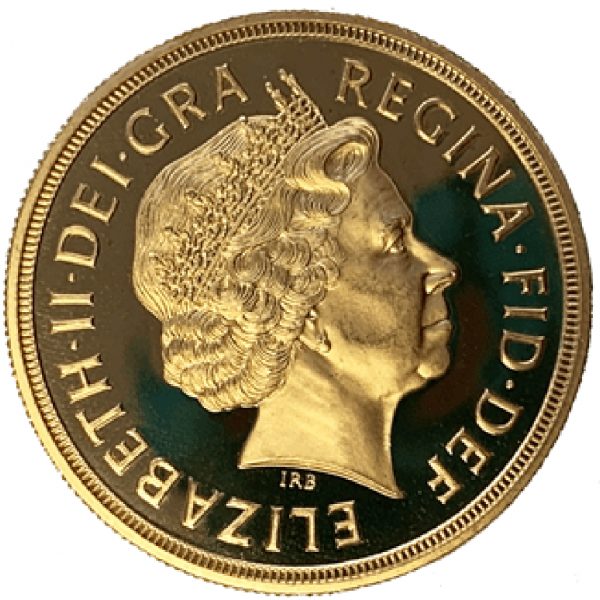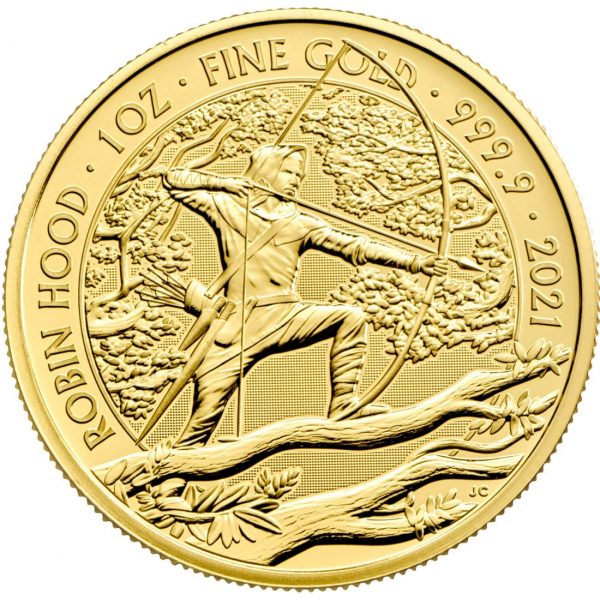Who Sets The Gold Price And How Is It Determined
21/11/2023Daniel Fisher
Free & fully insured UK Delivery. Learn more
Secure & flexible payments. Learn more

Buyback Guarantee Learn more
The price of gold is determined by the global balance of supply and demand. The gold market is dynamic, with many factors influencing the equilibrium price at any given moment. At its core, when demand outstrips supply, the gold price will rise and vice versa.
Understanding gold pricing is key knowledge for both new and experienced investors and market participants looking to make informed decisions and add gold to their portfolios.
Once you understand how the gold price is set, you’ll be able to make better decisions, identify trends and opportunities and build a stronger investment portfolio.

Gold prices are generally quoted in troy ounces, grams, or kilograms. The primary benchmark is the London Bullion Market Association (LBMA) Gold Price, which serves as a centralised reference point for the physical gold market. This benchmark price is set twice daily during an electronic auction hosted on an electronic platform operated by the ICE Benchmark Administration (IBA).
The LBMA Gold Price auction consists of several participating banks and trading houses that place buy and sell orders on behalf of themselves and their clients. The opening price is set based on an equilibrium point where aggregated supply and demand bids balance out. This benchmark is widely accepted by market participants globally for valuing large gold transactions.
In addition to the spot price, gold futures prices play a key role in price discovery. Gold futures are binding contracts to buy or sell gold at a specified price on a future delivery date. They are traded on exchanges like COMEX in New York or the Multi Commodity Exchange (MCX) in India. The futures market provides an indication of prices expected in the future based on factors like inflation, interest rates, and currency rates.
The interplay between the spot and futures markets, coupled with continuous buying and selling on global exchanges, determines the prevailing price of gold. This complex mechanism ensures gold pricing reflects up-to-date supply and demand dynamics.
At a fundamental level, it is the push and pull between supply and demand that drives gold prices. On the supply side, mine production accounts for the largest source of gold, followed by the recycling of existing gold. Annual global gold mine production has remained relatively stable in recent years, averaging around 3,200 tons per year. Recycled gold volumes fluctuate based on the gold price and economic conditions.
On the demand side, the largest sectors are jewellery fabrication, investment, and central bank reserves. Gold jewellery demand has fallen in many regions due to high prices. Meanwhile, investment demand has risen, driven by economic uncertainty and high inflation. Many central banks, especially in emerging markets, are continuing to stockpile gold reserves to diversify portfolios.
When demand growth outpaces supply, the imbalance puts upward pressure on the gold price. Conversely, when supply surges, or demand falls, gold prices tend to decline.
Real-world supply and demand dynamics are key signals the market uses to find equilibrium pricing at any given time. This core economic principle is at the heart of what moves gold valuations.
Inflation is a key economic variable that can significantly impact gold prices. When inflation rises, gold often benefits from its perception as an inflation hedge. This was seen in 2022, as multi-decade high inflation drove gold prices higher. However, if inflationary pressures fade, this tailwind for gold prices could weaken.
Interest rates have an inverse relationship with gold prices. When interest rates rise, gold becomes less appealing compared to yield-bearing assets. This can put downward pressure on gold prices. However, if economic instability prompts central banks to lower rates again, this can provide support for gold by increasing its relative attractiveness.
Currency fluctuations, especially in the US dollar, also influence gold prices. A weaker dollar tends to increase demand for gold as an alternative asset, driving prices higher. In contrast, a strong dollar makes gold less appealing to foreign buyers, weighing on gold prices. Lately the robust dollar has created headwinds for gold.
The impact of major currencies on the gold price becomes more complex when monitoring gold’s value in non-USD terms. If you’re tracking the gold price in Sterling for instance, the value is also impacted by the exchange rate between USD and GBP. If the US Dollar rises in value, you’d expect the gold price to fall, but if it rises in value more than British Pounds appreciate in that period, then the gold price in GBP may even increase. In this example, the dynamic becomes particularly apparent if the UK’s Monetary Policy Committee (MPC) moves interest rates at a quicker/slower pace than the US Federal Reserve.
Carefully monitoring these and other economic indicators can help investors understand when macro conditions may favour or pose challenges for gold. However, predicting their precise impacts is an inexact exercise.
Free ultimate guide for keen gold investors
When heavy-hitter investors make waves, gold markets notice. Their massive fund flows can really pack a punch.
Gold ETFs like the SPDR Fund are juggernauts, with hordes of shares backing each unit of vaulted gold. When nervous investors pile in seeking safety, bullion banks must scramble to find enough gold bars to fill all those fund orders. You can bet prices shoot up when billions flood into precious ETFs.
Hedge funds are also heavyweights. When economic uncertainty looms, they often recommend increasing strategic gold positions. Their clients listen, moving the needle in a big way.
And you can’t ignore the central banks. They hold tons of power in their vaults. If more decide to diversify away from dollars and add to their gleaming gold stacks, it’s like an earthquake rattling prices higher.The past decade has witnessed a growing theme of Central Banks gradually shifting some of their traditionally held US Dollar reserve’s into gold. This strategy aims to minimise risk of depreciation and over-reliance on a US-led global economy.
The point is, the big guys carry outsized influence. Watch what they do with their mountains of money. Those flows could predict the next wave about to hit gold markets.
The psychology of market participants is another key variable influencing gold price movements. Market sentiment and speculative trading can amplify both upward and downward price swings.
During periods of geopolitical tensions, economic uncertainty, or stock market volatility, gold often benefits from its safe-haven appeal. Skittish investors bid up prices based on fear and anticipation of crises. This sentiment-driven momentum was seen in early 2022 amidst the Ukraine invasion.
However, speculative fever can also create downside risk. If gold prices spike, but the feared crisis does not materialise, speculative money tends to exit. This may accelerate selling momentum and price drops.
Investor emotions and reactive trading trigger short-term volatility. However, the fundamental drivers of prices anchored in supply and demand tend to assert themselves over the long run. Distinguishing the signal from the noise is key for investors in gold.
Usually the most profitable timing to buy and sell gold is inverse to the general market sentiment. It’s always tempting to buy gold when you see everyone else investing and prices moving higher each day. But usually this means buying at a relatively high price, unless you manage to get in at the beginning of an upward cycle. The brave investor will consider gold’s medium to long term outlook and look to make purchases when gold is less popular.
Our automated portfolio builder will provide suggestions based on various investment objectives.
New technologies are emerging that could potentially impact gold production and demand while regulations evolve to maintain market integrity.
On the mining supply side, research and development (R&D) efforts are focused on innovations to improve extraction efficiency and lower costs. However, new high-tech mines often face ramp-up periods of lower output before reaching designed capacity. Overall, new mines and technologies take years to impact supply in a major way.
Some startups and now even banks like HSBC are exploring blockchain and tokenisation models to expand access to gold investment. However, regulatory uncertainty exists around treating tokenised gold as a financial asset. The impact on mainstream investment demand remains to be seen.
Regulators continue to adapt frameworks to improve transparency and integrity. The LBMA recently added new trade reporting requirements and introduced a code of conduct. While the FCA does not directly regulate bullion dealers in the UK, the FCA does monitor market conduct and pricing mechanisms.
However, major structural changes to increase regulation of the global bullion market face challenges in implementation and coordination across countries.
For investors looking to add gold to their portfolio, purchasing physical gold coins or bars is a tangible way to gain exposure. Physical Gold offers an extensive selection of gold bars and coins from trusted global mints and refineries.
The team of precious metals experts at Physical Gold can advise you on selecting the right mix of gold products tailored to your investment goals and risk tolerance. Our Portfolio Creator tool also provides investors with personalised gold portfolio recommendations based on their investment timeframe and budget.
Many Physical Gold products qualify as Capital Gains Tax-free for UK investors, including popular gold Britannia and Sovereign coins issued by The Royal Mint. The team stays up-to-date on the latest tax rules to help customers minimise the tax impact of their gold purchases.
Buying gold bullion from Physical Gold is a straightforward process conducted online or over the phone. You can opt to store your gold in secure vaults or take physical delivery. Individually serialised products provide proof of ownership.
Visit the Physical Gold website to browse gold bars and coins and receive expert guidance on kickstarting your precious metals investment journey today.
No, the price of gold fluctuates dynamically based on supply, demand, and other market forces. The LBMA Gold Price benchmark provides a fixed reference point, but gold trades at various prices around the world.
The LBMA Gold Price benchmark is set by participants in an electronic auction run by the ICE Benchmarks Administration. This serves as a widely used reference for gold’s value.
Gold prices respond to many factors, so predictions are complex. However, some analysts foresee headwinds from rising rates and dollar strength leading to a potential price drop. This can provide an ideal buying opportunity for those seeking gold exposure at low prices.
No, the retail markup only covers a dealer’s costs rather than impacting gold’s inherent value. The gold content retains its underlying worth after purchase.
Secondary market gold can be traded at a discount to newly minted coins. Factors like condition, origins, and fractional weights also impact pricing variations.




Live Gold Spot Price in Sterling. Gold is one of the densest of all metals. It is a good conductor of heat and electricity. It is also soft and the most malleable and ductile of the elements; an ounce (31.1 grams; gold is weighed in troy ounces) can be beaten out to 187 square feet (about 17 square metres) in extremely thin sheets called gold leaf.
Live Silver Spot Price in Sterling. Silver (Ag), chemical element, a white lustrous metal valued for its decorative beauty and electrical conductivity. Silver is located in Group 11 (Ib) and Period 5 of the periodic table, between copper (Period 4) and gold (Period 6), and its physical and chemical properties are intermediate between those two metals.